Gallery: 21 African postal stamps that commemorate technology
How many African postal stamps pay homage to the computer? Five? Ten? Fifty? According to Vito Galgano’s collection over at Computer-Stamps.com, there are at least 134 such stamps. Many highlight international anniversaries, others honor international efforts to promote technology, and others depict space programs. Notable African postal stamp issues came on World Telecommunications Day (1977), World Communications Year (1983-4), the UN’s ‘Dialogue among civilizations’ (2001), and Philexafrique (1985).
Interesting is how numerous African nations honored the computer via postage stamp, even if 1) few computers existed in the private sector and 2) postal services themselves were lacking or not widely used. In the past, an internationally initiated postal stamp issue (which constitute a large share of computer-themed African stamps) generally did not reflect the computing situation on the ground. Instead, these stamps commemorate an international initiative. They use an image that relates to that international theme – even if said theme is in its early stages in the issuing African nation.
Certainly the idea behind any computing stamp is to raise awareness of the power of technology. Still, the casual observer (if there is such a person interested in stamps) may get the wrong idea about how far technology has actually reached in Africa.
Examples of African stamps that commemorate technology can be found in the gallery below. Recent stamps hail from Botswana, Liberia, Namibia, Morocco, South Africa, and Swaziland. All images are from Vito Galgano, Computer-Stamps.com:
- Algeria. “Technical Education,” 1996. Very simple and colorful. Suggests how the computer is key to a technical education.
- Botswana. “University of Botswana,” 2007. Suggests that Botswana’s universities emphasize computing.
- Burkina Faso. “Philexafrique,” 1985. Interesting that Burkina Faso would depict a computer on a 1985 stamp given the extremely low penetration at the time.
- Chad. “Philexafrica,” 1985. Interesting that Chad would depict a computer on a 1985 stamp, but this is part of an international release.
- Djibouti. “World Telecommunications Day,” 1998. Djibouti decided to honor the ITU by issuing a stamp. A mobile phone and a computer are shown, although access at the time had to be minimal.
- Egypt. “50th Anniversary of IBM in Egypt,” 2004. IBM was most likely a major contributor to tech growth in Egypt during the 1990s.
- Gabon. “Y2K Bug,” 2000. Again, interesting that Gabon would issue a stamp commemorating the Y2K bug given the low computer presence in the nation.
- Gabon. “Scientific Achievements of the 20th century,” 2000. Honoring the microprocessor’s invention in 1971. Noteworthy since Gabon had relatively few computers in the year 2000.
- Ghana. “World Communications Year,” 1983. Commemorates various electronic products.
- Kenya. “125th Anniversary of ITU,” 1990. Youth in electronic age. A push by the ITU to promote education.
- Liberia. “Millennium Development Goal,” 2006. Promotes gender equality and empowers women. The foreground has a woman typing at a computer terminal. President Ellen Johnson Sirleaf took office in this year.
- Libya. “Press and information,” 1996. Amazing that this stamp exists given the nature of Gaddafi’s rule.
- Mauritius, “National Day,” 1993. Front and center is a computer with chart, ostensibly to show tech progress.
- Morocco. “Internet Children Protection, 2009.” Brings attention to the dangers of cyber stalking. Very progressive.
- Namibia. “Rural Development,” 2003. Predominantly focuses on water and electricity supply, but a computer is visible as well.
- Sierra Leone. “3rd UN Decade for Advancement of Women,” 1995. Shows a woman at a computer. Very progressive given the state of Sierra Leone in 1995.
- South Africa. “Bridging the Digital Divide,” 2010. Highlights how postal service technology helps with daily tasks.
- Swaziland, “Information Communication Technology,” 2008. Highlights the power of ICT to educate youth.
- Uganda. “World Communications Year,” 1983. A white man sits at a computer terminal. An example of where the image doesn’t apply to the true tech scene in Uganda.
- Zaire, “World Communications Year,” 1984. Interesting how this was released during Mobutu’s regime.
- Zimbabwe, “UN Decade for Women,” 1985. Part of a series, this stamp is extremely progressive for 1985, let alone today.
Also noteworthy is how Libya, Djibouti, Gabon, and Mali have issued more than 5 computer stamps a piece – and many were issued before the year 2000 . According to March 2011 ITU stats, these nations boast Internet penetration rates of 5.4%, 7%, 6.3%, and 1.8%, respectively.
Note: No computer stamps were found for 21 African nations/islands.






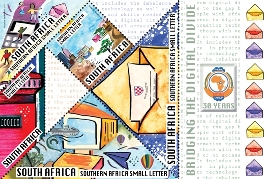
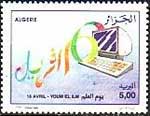
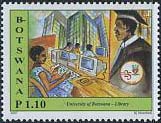
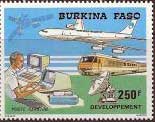
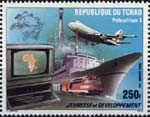
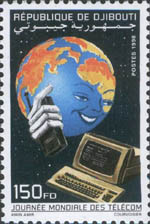
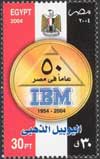

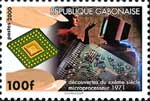



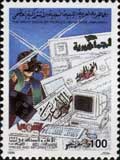
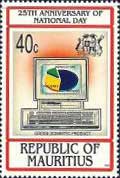
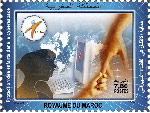

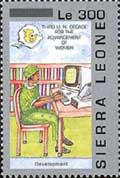
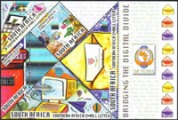


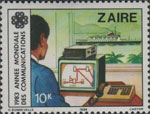
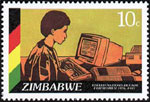






 Twitter
Twitter Facebook
Facebook Pinterest
Pinterest